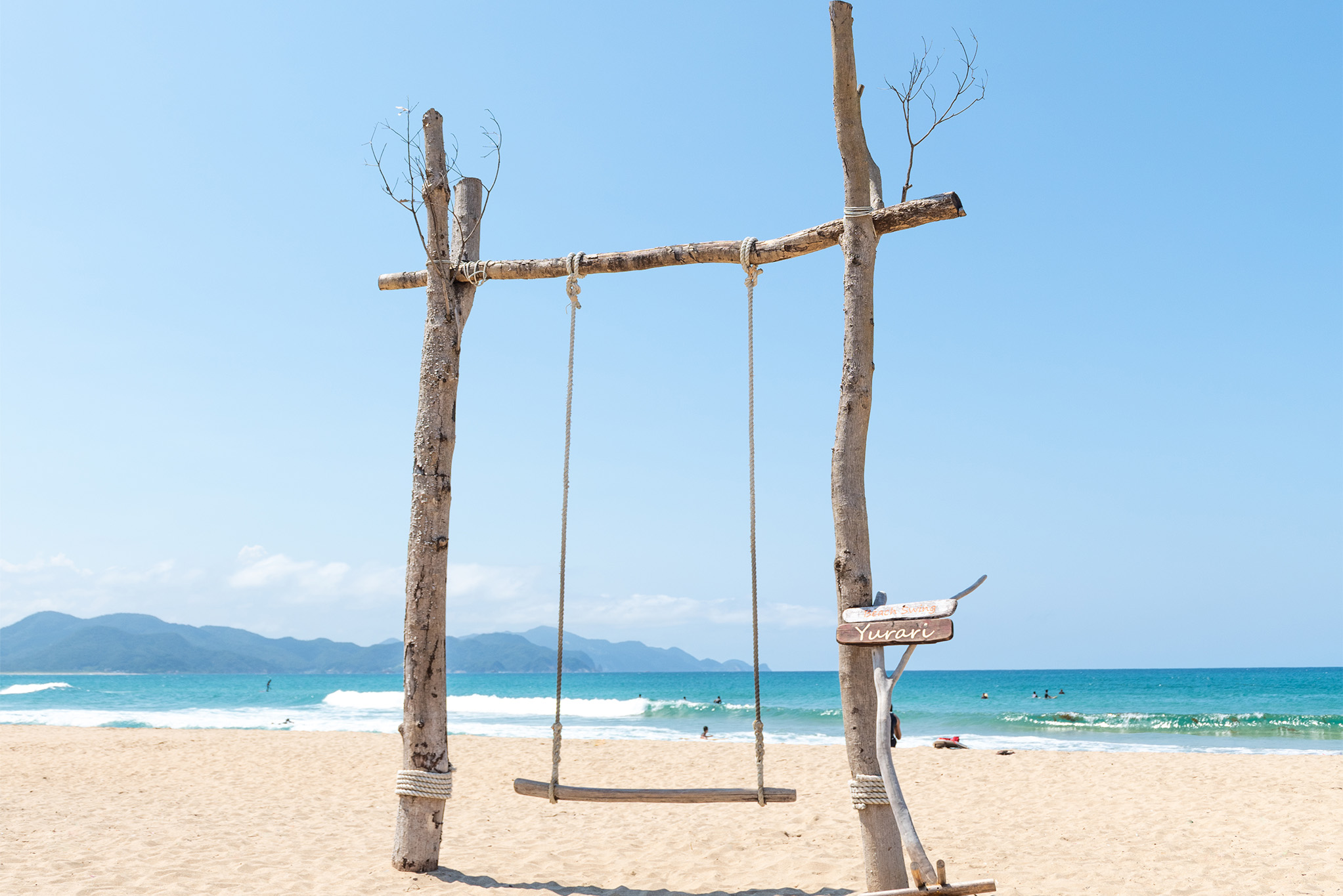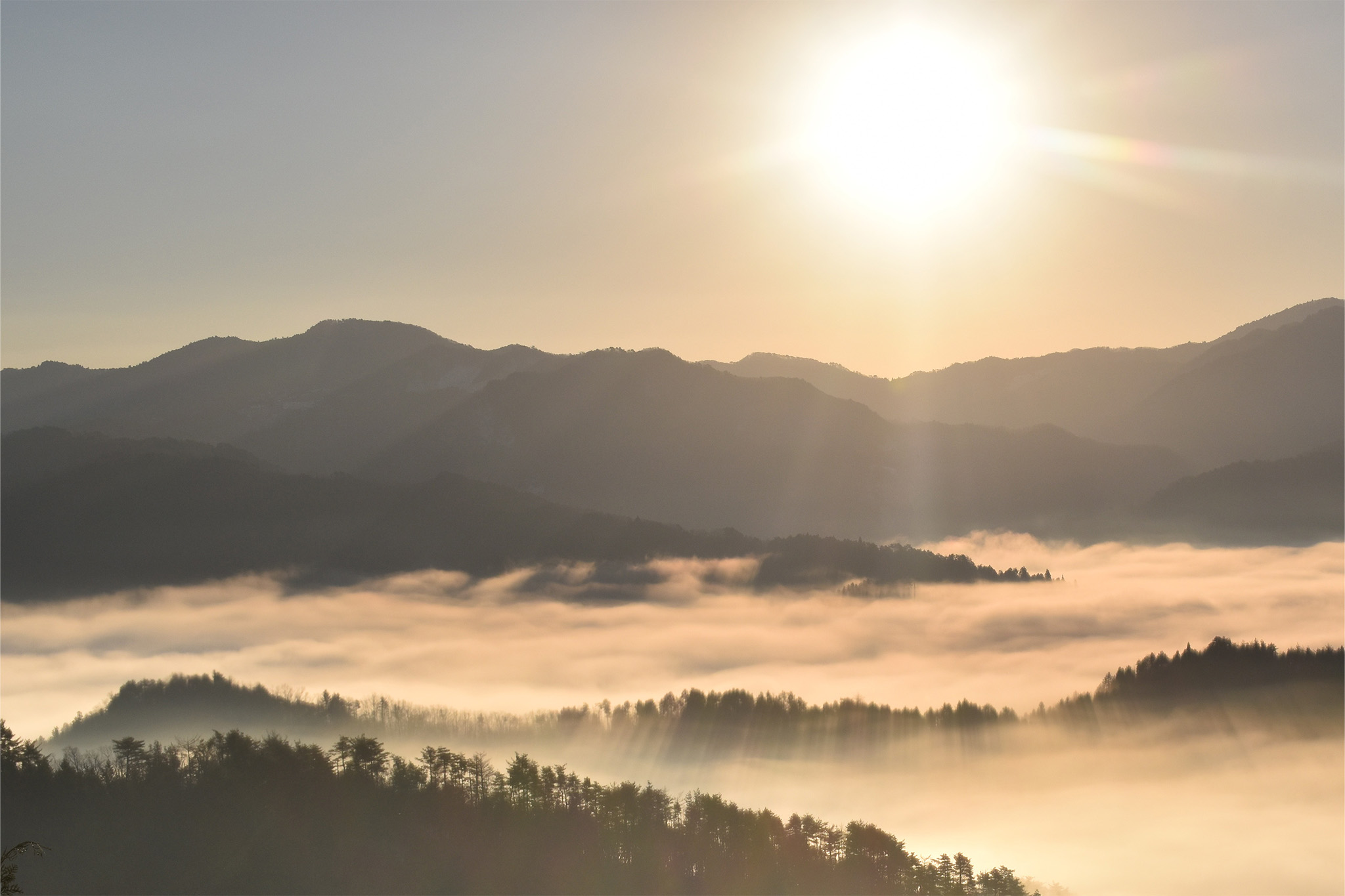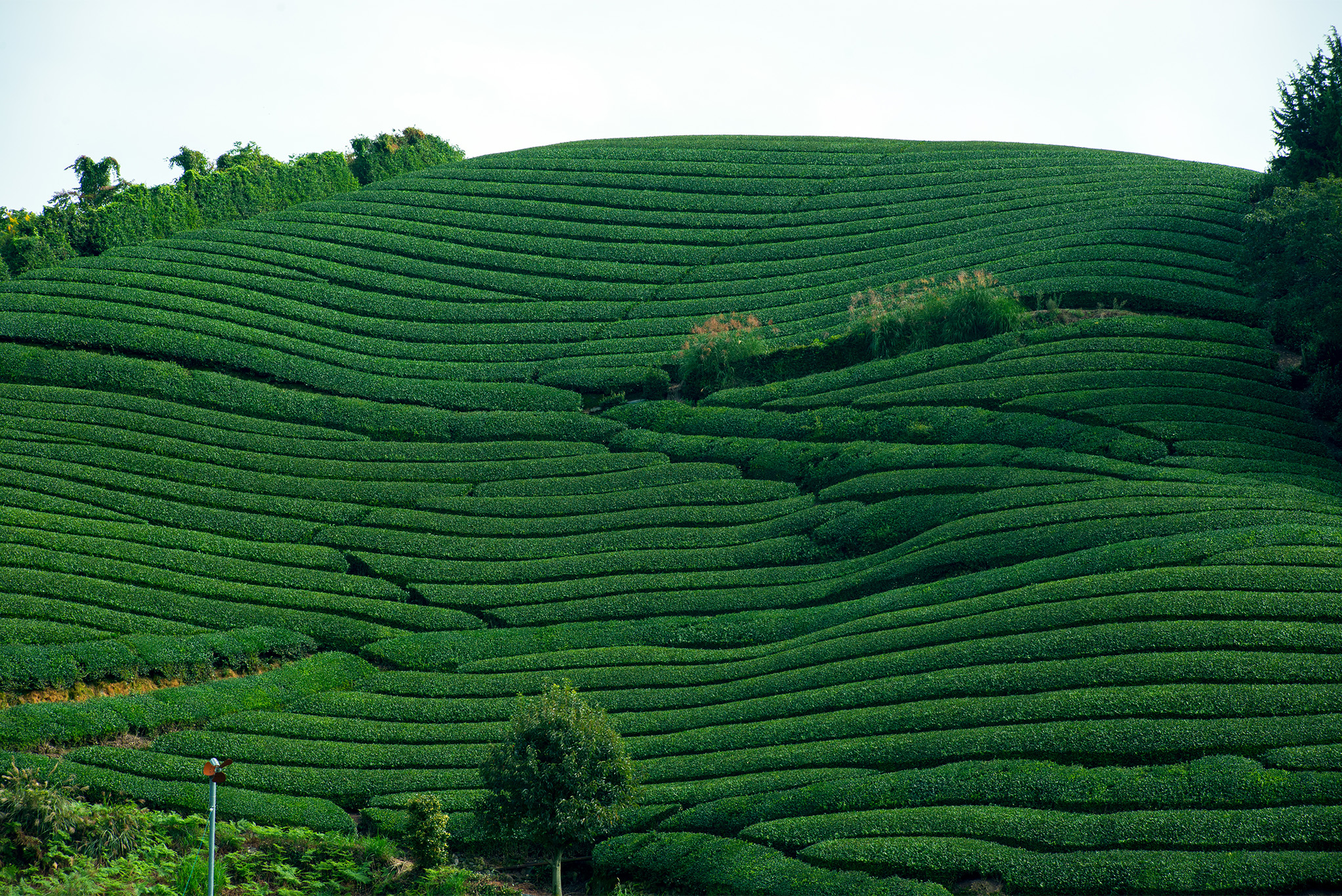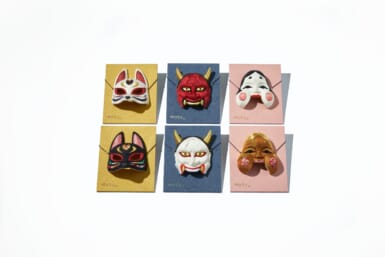Ishitera Tea Fields
A trip to Wazuka, a small town about an hour southeast of central Kyoto city, unveils a vision of idyllic rural life. Here, undulating hillsides are lined with rows of verdant tea bushes growing Kyoto’s coveted Uji tea leaves. The region has cultivated tea for over 800 years, earning it a Japan Heritage Site designation for its historical and cultural significance.
Wazuka’s first flush is harvested in late April, on the western Ishitera tea fields — a landscape so beautiful that it was the first to make Kyoto Prefecture’s scenic property list. One of the best views of the fields can be found at Dan Dan Café, where an open deck looks over the plantation. Pair your view with a cup of the local brew and a bite to eat.

Yuhigaura Beach
While Kyoto’s northern city of Kyotango is best known for its silk, seafood and hot springs, it also boasts some spectacular beaches. One of these is Yuhigaura (literally Sunset Inlet in Japanese), which, as its name suggests, boasts mesmerizing views as the sun sinks below the horizon. Within the inlet, Hamazume Beach provides the most stunning vantage point.
Visitors can enjoy the view by either strolling down Yuhi-no-michi (Sunset Path), or sitting on one of the many benches dotted along the route. From spring to autumn, passersby can enjoy the beach swing Yurari, which is 5 meters high and made from driftwood — an ideal spot for those looking for a snapshot-worthy frame.

Mount Kimino-o
For a vista that’s usually only seen in fairy tales and fantasy epics, make your way up the diminutive Mount Kimino-o in Ayabe city. At only 582 meters tall, it’s a moderate hike that offers surprisingly rich rewards. In autumn and winter — providing the conditions are right — a blanket of mist drapes over the Tanba mountains. This sea of clouds, known as unkai in Japanese, swells between the mountaintops, making them look like islands in a smoky sea. It requires dedication — and a bit of luck — to catch this mystical natural phenomenon. Increase your odds by heading out at dawn, ideally on a clear day after rain.
Even if you don’t catch this sight, you can still experience another of Mount Kimino-o’s main draws: Komyo-ji Temple, whose origins are said to date back to the late sixth century. The vermillion, two-tiered Niomon Gate and its imposing wooden guardian-king statues alone are well worth the visit.

Take-no-michi
For scenery that rivals the beauty of Arashiyama, but with significantly smaller crowds, head to this serene bamboo path in Muko city. Located to the southwest of central Kyoto city, Muko and Nagaokakyo cities together produce some of the region’s highest quality bamboo shoots. The enchanting Take-no-michi (literally Bamboo Path) is a 1.8-kilometer-long path lined with eight types of bamboo, enveloping visitors in a soundscape of birdsong and the rustling of leaves.
Visitors curious to know more about the bamboo can stop by Rakusai Chikurin Park, which exhibits not only 110 kinds of bamboo from around Japan but also explains the ecology of bamboo groves and how this unique grass forms the foundation of traditional customs such as tea ceremony, kendo swords, musical instruments and more.
More Info on Things To Do in Kyoto
To learn more about what Kyoto Prefecture has to offer, visit kyototourism.org/en/.









